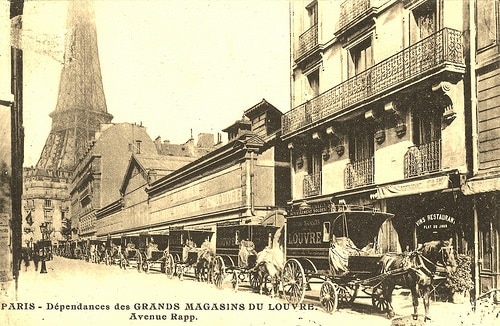From Funny to Fanciful and In-Between: New Arrivals in the Children’s Library
1 May 2012Great Historical Fiction for Kids – House Baba Built
9 May 2012David Herlihy on bicycle history
David V. Herlihy is the author of The Lost Cyclist and Bicycle: The History, winner of the 2004 Award for Excellence in the History of Science. A leading authority in his field, he has been interviewed by numerous television, radio, and newspaper personalities in the U.S. and abroad, and his work has appeared in a wide variety of general interest and specialty magazines. He is responsible for the naming of a bicycle path in Boston after Pierre Lallement, the original bicycle patentee, and for the installation of a plaque by the New Haven green where the Frenchman introduced Americans to the art of cycling in 1866. He writes:
I have been deeply immersed in bicycle history for about twenty years now. I started by writing a few retrospective articles for Bicycle Guide, a defunct magazine for cycling enthusiasts. Then I learned that the Frenchman who first patented the basic bicycle, in 1866, is buried in my hometown, Boston—and no one knew anything about it! I began to research the life of this forgotten mechanic, Pierre Lallement, originally from Pont-à-Mousson.
I gradually expanded my research to include the early development of the bicycle, the high-wheel era of the 1880s, and the boom years of the 1890s, when the “safety” bicycle was introduced (the modern prototype). Then I turned my attention to the bicycle in the automotive age. This extensive work provided the foundation for my first book, Bicycle: the History, with Yale University Press, in 2004.
Two years ago, I published my second book, The Lost Cyclist, with Houghton Mifflin Harcourt. It’s about Frank Lenz, a German-American who, growing up in Pittsburgh in the 1880s, discovers a love for the high bicycle. It was a fleet and precarious machine, which suited the dashing Lenz just fine. He rode many hundreds of miles into the countryside, to escape the gritty, industrial city, his boring accounting job, and his unhappy home consisting of a doting mother and an alcoholic stepfather.
Lenz adored Thomas Stevens, an Anglo-American who had just completed a global circuit on his bicycle, as a correspondent with Outing magazine. Chancing upon Stevens’ bicycle on display in Buffalo, following a disappointing finish in a 100-mile bicycle race, Lenz vowed that we would one day make an even grander world tour.
Lenz quickly realized that his best chance to attract a sponsor was to hone his skills as photographer, so that he could record his adventure en route. During his summer vacations in 1890 and 1891, he took several long distance tours with his pal Charles Petticord, lugging along his wooden box camera and glass plates to build his portfolio.
Finally, in early 1892, Outing magazine, the same review that had sponsored Stevens on his world tour, agreed to Lenz’s proposition to tour the world “with wheel and camera.” However, the editor made it very clear to Lenz that he would have to ride a new-fangled “safety” bicycle, with chain and sprocket. Lenz had long resisted this diminutive mount, developed in Great Britain in the late 1880s, but he realized that was that this would be his only opportunity to achieve his dream. So he agreed to the terms.
On May 15, 1892, Lenz set off from Pittsburgh with his 57-pound (25 kilo) Victor pneumatic, laden with some 40 pounds of gear. Somewhat ironically, given his stubborn devotion to the high-wheeler, he became the most prominent proponent of the new style bicycle, which was even beginning to attract female riders. It is not exaggeration to say that his advocacy would help to spark the great bicycle boom.
Two years later, as he neared Europe for the final leg, Lenz vanished myseriously. As pressure mounted on Outing to find their lost correspondent, the editor decided to send William Sachtleben to Lenz’s last known location, in Eastern Turkey. Sachtleben had only recently completed his own, self-funded, “round the world” bicycle journey, along with a college chum named Thomas G. Allen, Jr. The pair had covered the same caravan road that Lenz was following.
Sachtleben’s mission was delayed, however, as Turkey slipped ever deeper into a violent chaos, including a wave of Armenian massacres. The ancient Ottoman Empire itself was on the verge of collapse. Sachtleben reached Turkey in the spring of 1895, a year after Lenz’s disappearance. Under the most difficult circumstances imaginable, Sachtleben began his search. His quest for justice would attract worldwide attention, drawing the direct involvement of the State Department and the Sultan himself.
I very much look forward to lively evening of bicycle history at the American Library!


